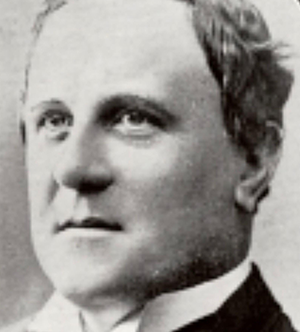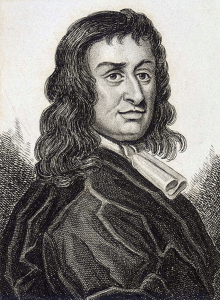May 09
Published in On this Day listing 1908 Luke Livingstone Macassey (c. 65), civil engineer and barrister, died. Macassey is remembered as Belfast’s ‘water hero’, the visionary engineer who brought a reliable supply of clean water to a city whose population had risen from 22,000 in 1807 to 270,000 in 1890 and in so doing probably saved more lives—from typhoid and cholera—than the medical profession at the time. In 1874 the Belfast and District Water Commissioners appointed him as their consultant hydraulic engineer, and he proceeded to build reservoirs above Carrickfergus and Lisburn, which were sufficient for the city’s needs until 1890, when it became clear that drastic action was needed. He and his team investigated five possible sources of water supply, ruled out four (including Lough Neagh) and recommended the Mournes, where rainfall was plentiful and 30 million gallons of water were deliverable every day. Apart from a massive pipeline, a reservoir in the chosen location would be required. The Commission therefore purchased the 9,000 acres of mountain needed for the plans, and in 1905 the pipeline began to deliver water from the Kilkeel and Annalong rivers to a reservoir some 30 miles away to the south of the city, which has provided a plentiful supply ever since. Work then began on constructing a wall to mark the Commission’s catchment area. The famous ‘Mourne Wall’, standing up to 8ft high, 3ft wide and 22 miles in length, which connects the summits of no less than fifteen mountains, including Slieve Donard (850m), was completed by an army of seasonal workers in 1922. Macassey didn’t live to see his proposed reservoir. The Silent Valley reservoir was built between 1923 and 1933 and augmented by the Ben Crom reservoir in 1957.
1908 Luke Livingstone Macassey (c. 65), civil engineer and barrister, died. Macassey is remembered as Belfast’s ‘water hero’, the visionary engineer who brought a reliable supply of clean water to a city whose population had risen from 22,000 in 1807 to 270,000 in 1890 and in so doing probably saved more lives—from typhoid and cholera—than the medical profession at the time. In 1874 the Belfast and District Water Commissioners appointed him as their consultant hydraulic engineer, and he proceeded to build reservoirs above Carrickfergus and Lisburn, which were sufficient for the city’s needs until 1890, when it became clear that drastic action was needed. He and his team investigated five possible sources of water supply, ruled out four (including Lough Neagh) and recommended the Mournes, where rainfall was plentiful and 30 million gallons of water were deliverable every day. Apart from a massive pipeline, a reservoir in the chosen location would be required. The Commission therefore purchased the 9,000 acres of mountain needed for the plans, and in 1905 the pipeline began to deliver water from the Kilkeel and Annalong rivers to a reservoir some 30 miles away to the south of the city, which has provided a plentiful supply ever since. Work then began on constructing a wall to mark the Commission’s catchment area. The famous ‘Mourne Wall’, standing up to 8ft high, 3ft wide and 22 miles in length, which connects the summits of no less than fifteen mountains, including Slieve Donard (850m), was completed by an army of seasonal workers in 1922. Macassey didn’t live to see his proposed reservoir. The Silent Valley reservoir was built between 1923 and 1933 and augmented by the Ben Crom reservoir in 1957.- 1918 Sir John French was sworn in as lord lieutenant and supreme commander of the British Army in Ireland.
-

Above: Col. Thomas Blood—he switched sides during the English Civil War and gained a reputation for intrigue and espionage.
1671 Irishman Col. Thomas Blood stole the Crown Jewels of England from the Tower of London. Having switched sides during the English Civil War, during which he gained a reputation for intrigue and espionage, Blood lost most of his lands with the Restoration and thereafter conducted a terror campaign against the Stuart establishment. None of his operations were remotely successful. A conspiracy to take Dublin Castle and stage a coup d’état was easily foiled, forcing him to flee to the Continent with a bounty of £1,000 on his head. A year later he reappeared in a kidnap attempt on the duke of Ormond in London, which was also unsuccessful, as was an attempt to assassinate the king as he was taking a dip in the Thames. The theft of the royal regalia was similarly botched. Pursued by the guards, with the crown, globe and sceptre stuffed under their clothing, he and his accomplices were promptly arrested. Yet in terms of outcome the botched robbery was his one big success. Refusing to speak to anyone except the king himself, he admitted to all of his conspiracies and warned the king that he had many friends who would ‘expose his majesty … to the daily fear and expectation of a massacre’. On the other hand, were he free to use his experience in the spying profession as a secret agent for the royal administration, he could prevent such attacks. And his arrogance prevailed. Charles was won over and accepted his offer. Blood lived in comfort on a generous royal allowance for another decade. Whether his services were of any use is not known.
















